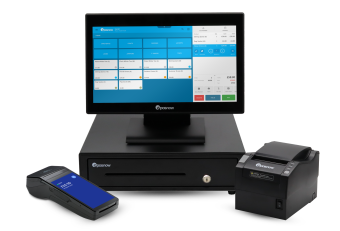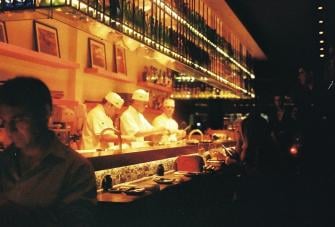Restaurant Turnover Rate: How To Calculate It?
In 2019, UK restaurants was the source of 1,000,000 jobs[1]. That's 1,000,000 staff coming and going, all learning a new hospitality POS, a new menu, new customers and taking time to provide the quality work of the staff they replace.
These labour statistics don't show that rehiring staff costs businesses time, damages the quality of service, and can be extremely disruptive. However, the restaurant turnover rate is one of the highest out there. One of the best things a restaurant owner can do is find out why staff leave the business and address them as best they can.
While every restaurant is different, the statistics on employee retention in the industry indicate industry-wide trends likely affecting your business. So, how can you tell if your restaurant staff turnover rate is higher than average? How do you calculate staff turnover rate? And what can you do to address the problem?
What is restaurant turnover?
Employee turnover is the number of employees that leave a business over a period of time. There are a number of different ways to look at employee turnover, and the different ways of measuring it can suggest many things about the business.
It's also important to distinguish between employee turnover and turnover itself. These are both terms used regularly in business but have very different meanings. Turnover (minus employee) is a close synonym for revenue and refers to the total income a business receives from sales or the speed at which a business sells its products.
Different kinds of restaurant employee turnover
In brief, here are the main types of employee turnover you're likely to encounter and may benefit from measuring within your business:
Overall employee turnover
Also called crude turnover, this measures ALL employees that leave the business. All leavers are included in this statistic whether they're part-time, full-time, or volunteer, and whether or not they were fired and replaced, made redundant, or retired.
Overall employee turnover may indicate the level of expertise within the business. If a larger percentage of your staff leave each year, then the overall business service length will be comparatively low.
However, crude turnover does not discriminate between the different reasons for staff leaving and thus doesn't really indicate how they felt about the business itself and whether that member of staff could have stayed on had things been different.
Resignation turnover
Moreso than overall turnover, the number of resignations from the restaurant each year indicates the morale and motivation of the team. While it is natural for any business to have some resignations, a high number may feel that factors within the business are leading staff to look for opportunities elsewhere.
Particularly within the restaurant industry, resignations will be natural. Both front-of-house staff (FOH) and back-of-house staff (BOH) tend to fall into younger demographics, student employees, some of whom may decide to attend universities in different cities or change careers.
Measuring turnover should be done based on averages. It might be that in a team of 20, 3 members of staff resign in a year, but that doesn't necessarily mean that your restaurant is an unpleasant place to work. That's why it's also important to ask those leaving the business in exit interviews so that you can determine whether changes to employee management are necessary.
Redundancy turnover
While redundancy is turnover initiated by the business and, in many cases, does not lead to new staff being trained in their place, it is useful for a business to measure for several reasons.
The redundancy statistic for your business is only useful when more context is given with more detail. For instance, redundancy might occur because one part of the business (or the entire business) needs to reduce its staff bill. But it might also happen due to poor performance by a team member, bad behaviour, or the staff member simply being a poor fit for the role.
In each case, the frequency of these occurrences might cause restaurants to reconsider factors such as the hiring process to ensure you hire staff that will fit with the team and their role. If staff repeatedly don't fit in with the team, can changes be made to the company culture to create more cohesion?
Alternatively, if seemingly capable team members repeatedly struggle with a role, could there be a question of poor management or training that made their experience more difficult than necessary?
Epos Now provide the very best business tools with the flexibility to fit any restaurant with what it needs to flourish:
- Create a full business suite on a solid EPOS foundation with integrated card payments, online store, multi-site and multi-channel options
- Save time with seamless card integrations on mobile and countertop card devices
- Know your business better with hundreds of detailed, easy-to-read business reports

Employee retention
Employee retention is a related term to turnover rate and refers to the length of time people stay at the business.
This is fairly straightforward to calculate and understand. A three-year employee retention statistic would be the number of employees that have worked for the business for three years or more as a percentage. For instance, if your company has twenty-five employees, but only five have worked with you over three years, then your employee retention for three years would be 20%.
Employee retention correlates to your restaurant's turnover rate, but it's possible to have high restaurant employee turnover and employee retention simultaneously. Your company could go from having a 20% employee retention rate to a 30% retention (which would be 8 or 9 out of 25 in the example above). Simultaneously, turnover could rise as many other staff members that had served fewer than three years leave and new employees take their place.
Calculating the average restaurant turnover rate
Typically, a business will look at turnover rates year-by-year. However, larger companies with several hundred or thousand employees may calculate on a monthly basis.
Whichever you are calculating here, the simplest way to calculate your employee turnover rate is, to begin with, the number of staff that have left in a given period. Then divide that number by the total number of staff you had at the beginning of that time, multiplying the answer by one hundred. So the sum should look like this:
Lost staff ÷ total staff x 100 = annual turnover rate (%)
If you were to calculate one of the specific kinds of staff attrition, such as resignations, all you need to do is replace the lost staff figure with the number of resignations in the same period.
What's important to remember is that if you measure for a given period, the total staff figure needs to be sourced from the beginning of that period. This is because if the business has grown in that time, there may be a larger staff now, but this wasn't the case for all of that period. If there has been significant growth, you may want to use an average total staff figure to compensate for that.
Understanding why a high restaurant turnover rate matters
Restaurant employees play a key role in providing quality across the food service industry. Chefs and kitchen staff are instrumental in ensuring the food is prepared quickly and to a high quality. In contrast, FOH staff become familiar with customers and can influence customer retention as often as the food.
Businesses can take a different approach to a high turnover rate. Many staff encounters a revolving-door restaurant culture that doesn't attempt to create growth opportunities but pays minimum wage and relies on tipped workers to motivate the team.
So what do businesses that don't make attempts to reduce turnover miss? What are the key factors of turnover in the restaurant industry?
When employees leave, it costs money
33% of turnover costs come from the expense of recruitment and managing reduced staffing numbers[2]. When other team members cannot pick up extra hours, it might mean paying premium staff rates to agencies to get professional temps to work shifts until a replacement is found.
Beyond agencies, there are the expenses of advertising the new role. Though restaurant jobs are often in demand and are likely to be filled, it costs money to advertise on job websites and in other places.
While the cost of the time it takes to hire new staff and release old staff can't be quantified easily, it's definitely costly. You may conduct exit interviews or not, but even if you don't, administrative duties need to be taken care of. Then there are the matters of restructuring shifts, updating your POS, changing passwords if there are security consequences, and interviewing and selecting new candidates.
Lower productivity and quality of service
Providing quality service is a first priority in the restaurant industry. But waiting staff or kitchen staff on their first day cannot hope to reach the standard your restaurant hopes to reach and that long-tenured employees do on a daily basis.
The consequence of better restaurant turnover rates is, therefore, better quality service. Neglecting this side of your restaurant management impacts both productivity and service quality. New staff cannot work as quickly and can slow down other employees as they request support and advice on completing tasks for the first time.
New hires will be unfamiliar not only with the policies and procedures of the business but with the menu and the customers themselves. Delivering memorable hospitality often entails giving customers details and good recommendations from the menu, which new employees cannot do for some time.
Loss of team cohesion
Across the hospitality industry, many employees become good friends with colleagues, which can boost productivity within the team. If staff are dissatisfied and leave, not only can this create constant concern among staff, but it can create the mindset that they are working a dead-end job and can snowball your turnover rate, leading to further resignations.
Reputational damage
Unless employees leaving feel particularly disgruntled, the consequences directly associated with ex-staff shouldn't be too significant. Nevertheless, constantly having new staff working at a restaurant (in the FOH team) isn't a good look for the business. It indicates poor staff management and overall low quality.
What you can do to help retain staff
By now, you might need to take steps to improve the turnover rate at your restaurant. You can do many things to help with this, but it's important to note that each workplace is different and observing and listening to your staff to understand what they find difficult or less pleasant in their job is the first and most crucial step.
Even so, typical solutions to a high turnover rate can be:
- Boost employee engagement. Social bonds with colleagues can have a huge impact on employee turnover rates. The restaurant industry invites social characters who like being talkative and feeling togetherness. If your workplace culture doesn't naturally create that environment, teambuilding events might be an idea or inviting colleagues to have a drink together after shifts.
- Offer competitive pay. Naturally, a higher minimum wage can be a big factor in keeping staff. In the restaurant industry, contracts with basic rates per hour minimum wage are the industry average. However, if staff are working but are still short on money, they'll have no choice but to look elsewhere. Paying above the mandatory minimum wage can still be worthwhile for the business if it helps save other expenses and improve productivity.
- Using cash incentives. Though good service brings customers tips in themselves, offering a cash incentive to your most valuable staff helps ensure top performers make a little bit more money and are thus less likely to leave the business. Cash incentives can be for sales, good reviews, tasks completed, or anything else essential to the business.
Choose a restaurant POS your employees will adore
Epos Now offers a specialized hospitality EPOS that you can train new staff on in as little as fifteen minutes! A user-friendly interface and product details attached to hotkeys can ensure even new staff have information at their fingertips.
Choose an Epos Now EPOS system that:
- Streamline your sales process with fantastic transaction software and an all-in-one POS and payment processing service kit.
- Manage cross-channel products and inventory for delivery and takeaway, and view reports on-site or off using cloud technology.
- Increase security and simplify sales for new starters with staff access controls and multiple accessibility levels for a system that suits your needs.
- Make better business decisions using hundreds of downloadable reports and integrations with the best industry software for accounting, marketing, online ordering, and more.
To find out more about a restaurant system or retail POS system with every tool you need, submit your information below and speak to a member of our expert team.





